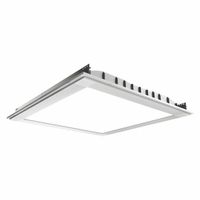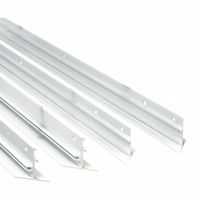- Home
- Lighting
- Lighting Fixtures Retrofit Kits
- Panel Troffer Light Fixtures
Panel & Troffer Light Fixtures
Panel and troffer light fixtures mount in drop ceiling grids to provide general lighting for large open areas and hallways. Also called recessed panels or troffers, they keep the majority of the fixture concealed in the ceiling for a clean look that doesn't draw attention to the fixture. The fixture .....Read More
Frequently Asked Questions
What are the benefits of using LED troffers over fluorescent ones?
How do you install a troffer light fixture in a drop ceiling?
What size troffer light fixture do I need for my space?
How do you choose the right color temperature for LED panels?
Can LED troffers be dimmed?
What is the lifespan of LED troffer lights compared to fluorescent ones?
How do you maintain and clean troffer light fixtures?



